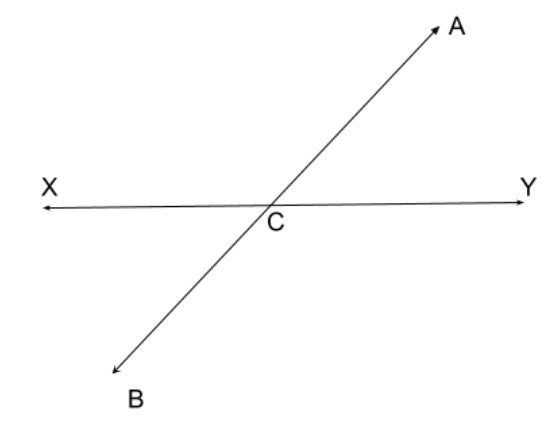
Write the pair of vertically opposite angles.


Answer
502.8k+ views
1 likes
Hint:Vertical Angles are the angles opposite each other when two lines cross. "Vertical" in this case means they share the same Vertex (corner point).Using this definition we try to find vertical opposite angles from the figure.
Complete step-by-step answer:
The given image is,

Vertical Angles are the angles opposite each other when two lines cross. "Vertical" in this case means they share the same Vertex (corner point).
Here
Then the vertical angles are
The interesting thing here is that, vertical angles are equal.
So,
Thus we get, the pair of vertically opposite angles are
Note:When two lines intersect each other, then the opposite angles, formed due to intersection are called vertical angles or vertically opposite angles. A pair of vertically opposite angles are always equal to each other. Also, a vertical angle and its adjacent angle are supplementary angles, that is they add up to
When two lines meet at a point in a plane, they are known as intersecting lines. When the lines do not meet at any point in a plane, they are called parallel lines.
Complete step-by-step answer:
The given image is,

Vertical Angles are the angles opposite each other when two lines cross. "Vertical" in this case means they share the same Vertex (corner point).
Here
Then the vertical angles are
The interesting thing here is that, vertical angles are equal.
So,
Thus we get, the pair of vertically opposite angles are
Note:When two lines intersect each other, then the opposite angles, formed due to intersection are called vertical angles or vertically opposite angles. A pair of vertically opposite angles are always equal to each other. Also, a vertical angle and its adjacent angle are supplementary angles, that is they add up to
When two lines meet at a point in a plane, they are known as intersecting lines. When the lines do not meet at any point in a plane, they are called parallel lines.
Latest Vedantu courses for you
Grade 10 | CBSE | SCHOOL | English
Vedantu 10 CBSE Pro Course - (2025-26)
School Full course for CBSE students
₹37,300 per year
Recently Updated Pages
Master Class 4 Maths: Engaging Questions & Answers for Success

Master Class 4 English: Engaging Questions & Answers for Success

Master Class 4 Science: Engaging Questions & Answers for Success

Class 4 Question and Answer - Your Ultimate Solutions Guide

Master Class 11 Economics: Engaging Questions & Answers for Success

Master Class 11 Business Studies: Engaging Questions & Answers for Success

Trending doubts
In Indian rupees 1 trillion is equal to how many c class 8 maths CBSE

List some examples of Rabi and Kharif crops class 8 biology CBSE

How many ounces are in 500 mL class 8 maths CBSE

What is the feminine gender of a stag class 8 english CBSE

Give me the opposite gender of Duck class 8 english CBSE

Summary of the poem Where the Mind is Without Fear class 8 english CBSE




